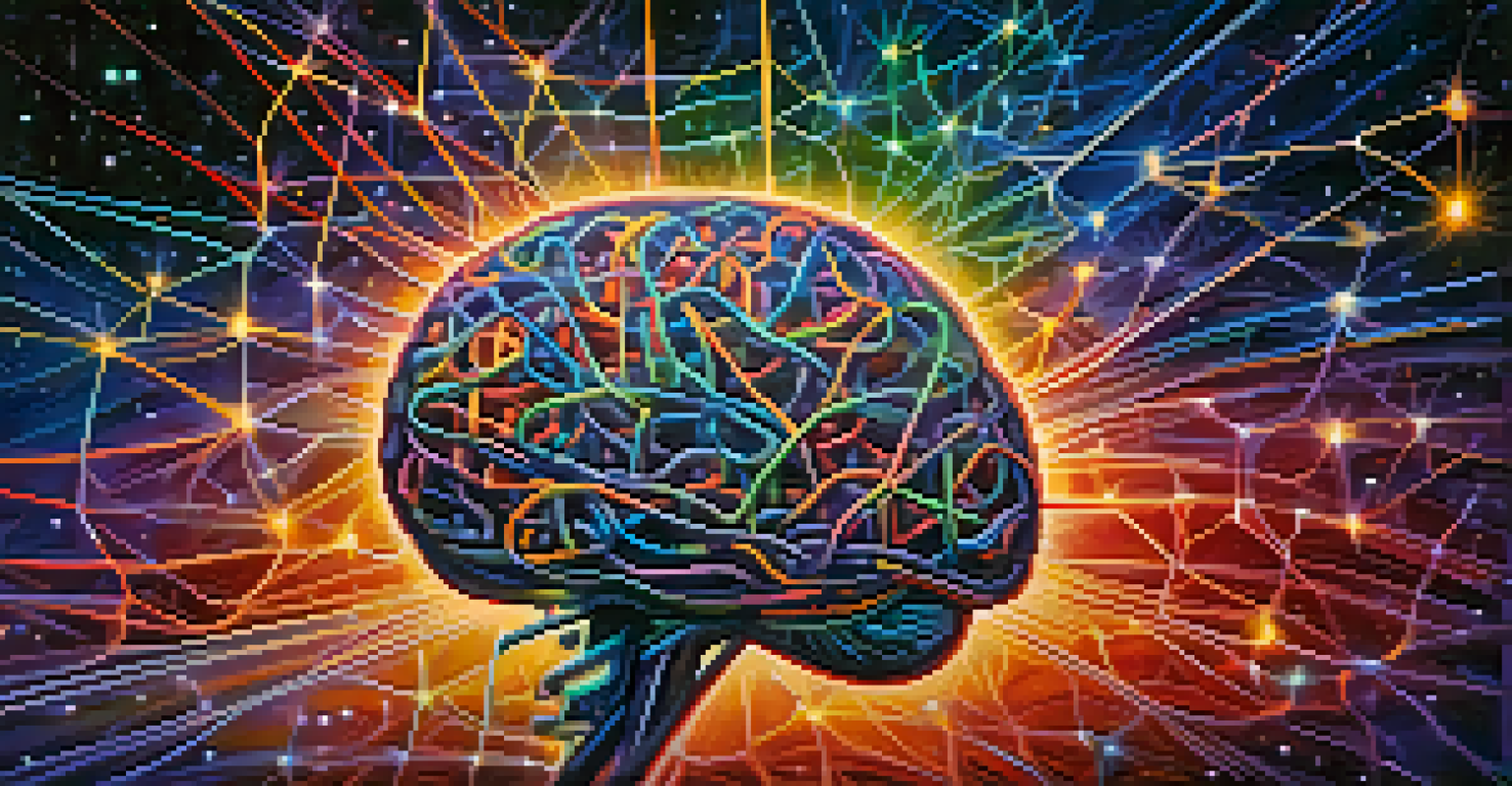Visual Hallucinations: Entheogens and Their Neurological Roots

Understanding Visual Hallucinations and Their Context
Visual hallucinations are experiences where individuals see things that aren't present in reality. These can range from simple flashes of light to complex, vivid scenes. They often occur in various contexts, including sleep deprivation, neurological disorders, and the use of substances.
Psychedelics can help us to understand the human mind in ways that are impossible to achieve with traditional methods.
Entheogens, substances often used in spiritual or religious settings, have been linked to these visual experiences. They can alter perception and create immersive visual effects that feel real to the user. The interplay between these substances and the brain’s chemistry can lead to profound insights or experiences.
Understanding how visual hallucinations manifest is crucial for both psychological and neurological studies. By exploring the mechanisms behind these experiences, researchers aim to unravel the complexities of human perception and consciousness.
The Role of Entheogens in Inducing Hallucinations
Entheogens, like psilocybin and ayahuasca, have been used for centuries to induce altered states of consciousness. These substances can trigger intense visual hallucinations, often described as otherworldly or deeply transformative. They interact with neurotransmitters in the brain, particularly serotonin, leading to changes in perception.

When consumed, entheogens can open the door to vivid imagery and enhanced sensory experiences. For many, these experiences serve as a pathway to self-discovery or spiritual awakening. The visuals can often reflect personal emotions and thoughts, making them highly subjective.
Entheogens Induce Vivid Hallucinations
Substances like psilocybin and ayahuasca can trigger intense visual experiences, often leading to self-discovery and spiritual insights.
The use of entheogens in controlled settings is gaining traction in scientific research, highlighting their potential therapeutic benefits. This focus on the neurological aspects helps demystify the experiences and provides insight into how these substances affect the brain.
Neurological Mechanisms Behind Hallucinations
The brain is a complex network, and hallucinations stem from intricate neurological processes. Areas like the visual cortex and the default mode network are heavily involved in how we perceive reality. When altered by substances like entheogens, these areas can produce vivid, often surreal imagery.
The use of psychedelics can be an important tool for personal transformation and healing.
Research suggests that entheogens may temporarily disrupt the brain's normal filtering processes. This disruption can lead to an overload of sensory information, resulting in the perception of images that don't exist. It's akin to tuning into a radio station that’s out of range, where static transforms into a cacophony of sounds.
By understanding these mechanisms, scientists can better comprehend not just hallucinations, but also conditions like schizophrenia or Parkinson's disease. This knowledge could pave the way for new treatments and therapeutic approaches.
Cultural Significance of Entheogenic Use
Throughout history, many cultures have embraced entheogens as tools for spiritual exploration. Indigenous tribes often use these substances in rituals to connect with the divine or their ancestors. This cultural significance highlights the deep-rooted belief in the power of these substances to alter perception and enhance understanding.
In modern times, there is a resurgence of interest in these practices, often referred to as 'psychedelic renaissance.' People are looking for alternative ways to explore consciousness, heal trauma, or foster creativity. These practices remind us that the intersection of culture and neuroscience is rich and multifaceted.
Therapeutic Potential of Entheogens
Recent research shows that entheogens may be effective in treating mental health conditions like depression and PTSD by facilitating emotional breakthroughs.
By studying these cultural contexts, researchers can appreciate the diverse perspectives on consciousness and mental health. This broader understanding may lead to more inclusive and effective therapeutic practices.
Potential Therapeutic Applications of Entheogens
Recent studies indicate that entheogens may have therapeutic potential for various mental health conditions. Conditions such as depression, anxiety, and PTSD have shown promising results when treated with entheogenic therapy. Participants often report significant shifts in their mental state and perspective.
This therapeutic approach leverages the hallucinatory experiences to facilitate emotional breakthroughs. Patients may confront underlying issues, leading to lasting change. The visual hallucinations often serve as metaphors for personal struggles, guiding individuals toward resolution.
As research continues to evolve, the integration of entheogens into mainstream therapy could revolutionize mental health care. However, it's vital to approach these therapies cautiously and with proper guidance to ensure safety and efficacy.
Challenges and Risks Associated with Entheogen Use
Despite the potential benefits, the use of entheogens isn't without risks. Individuals may experience adverse psychological effects, particularly if they have underlying mental health issues. Hallucinations, while fascinating, can also lead to confusion or distress if not properly managed.
Moreover, the legality of entheogens varies widely across different regions, complicating access and research. This legal landscape can hinder the ability to conduct thorough studies and explore the full potential of these substances. Inadequate regulation can also lead to unsafe practices in unmonitored settings.
Cultural Significance of Psychedelics
Throughout history, many cultures have used entheogens in rituals, highlighting their importance in spiritual exploration and understanding consciousness.
It's essential for individuals and practitioners to weigh the risks and benefits carefully. Education and responsible use are key to minimizing potential harm while exploring the therapeutic possibilities.
Future Directions in Research on Hallucinations and Entheogens
The future of research on visual hallucinations and entheogens looks promising, with advancements in neuroscience paving the way. As technology improves, scientists will be able to investigate the brain's response to these substances in greater detail. This could lead to breakthroughs in understanding consciousness and perception.
Moreover, interdisciplinary collaboration between neuroscientists, psychologists, and cultural anthropologists can enrich this field of study. By pooling insights from various domains, researchers can develop a more holistic understanding of how entheogens influence the mind and spirit.

As societal attitudes towards psychedelics shift, there may be increased funding and support for research initiatives. This could open new avenues for exploring the therapeutic potential of entheogens and their role in understanding human cognition.